K.M. Weiland's Blog, page 39
September 24, 2018
3 Tips for Improving Show, Don’t Tell
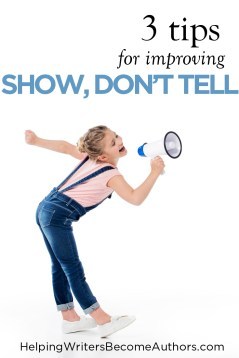 When looking for a new book to read, there are a couple quick tests I do to determine whether it seems like I can trust the author to know what they’re doing all book long. The first and most important of these tests usually requires just a quick glance across the first page to see whether the author demonstrates a grasp of “show, don’t tell.”
When looking for a new book to read, there are a couple quick tests I do to determine whether it seems like I can trust the author to know what they’re doing all book long. The first and most important of these tests usually requires just a quick glance across the first page to see whether the author demonstrates a grasp of “show, don’t tell.”
Show, don’t tell is one of the most basic principles of narrative fiction. Defined in a nutshell, it is the technique that allows readers to experience the events of the story, rather than observing them. Showing readers what’s happening involves active verbs that evoke all the senses. Showing invites readers to inhabit the context of the story with the subtext of their own imaginations.
Showing dramatizes.
This is in contrast to telling readers what happened. Telling spells things out as simply as possible. It doesn’t evoke a character’s joy. It just tells readers “she was happy.”
Telling summarizes.
Both showing and telling are equally viable and important fictional techniques. But the weight of a polished narrative should rest more heavily on showing than telling.
“The art of showing” is really “the art of narrative writing.” As such, it’s a technique all writers are constantly learning and refining. In the last year or so, I’ve learned some things about my own use of this technique that have helped me take dramatizing vs. summarizing to a better level in my own writing. That’s why, today, I want to talk about three ways you can up your “show, don’t tell” game.
What Show, Don’t Tell Really Means
First, a crash course.
“Show, don’t tell” is often one of the first critiques a fiction writer receives. Usually, the command is more than a little confusing. What does “show, don’t tell” even mean? You look at the passage your beta reader circled and you try to understand what’s wrong with the way you phrased it and how you could possibly have written it any other way.
Learning to recognize telling and differentiate it from showing can be a lengthy and sometimes less-than-intuitive process. I think many of us remember the moment when we suddenly got it and started recognizing telling in our writing and understanding how to rewrite it into more evocative showing.
Basically, the difference between showing and telling can be seen in the following:
Danny slogged through the tangled grass. Christopher marched along behind him, rifle in both hands, head up, eyes alert, just like his papa. Two or three times, Danny stopped to show him the buffalo tracks and the broken foliage the bull had torn up after his first shot.
vs.
The father and son were hunting a buffalo.
Both convey the same information. In fact, the second “telling” paragraph, conveys it much more efficiently (and therefore, would be appropriate in certain places in a story, for certain stylistic reasons). The second paragraph does not, however, show us what is happening. It does nothing to personify either the characters or the setting.
There are varied levels of showing. Part of the art of learning to write solid narrative is learning to consciously weave various degrees of dramatization into the story. Full-on showing at every juncture would drown most stories in unnecessary details (not to mention geysering their word counts). You will rarely, if ever, need to spell out every flinch of muscle involved in your character’s rising from a chair. There will even be times when your best option is to summarize whole swathes of action into a sentence or two.
But for the most part, all important events, actions, and feelings should be shown—dramatized. You want to paint word pictures for your readers, so they can experience the story on a sensory level.
Perhaps the most obvious example of this is dialogue. Dialogue is the purest form of showing. It gives readers a real-time accounting of what the character is hearing, word for word.
You can clearly see the difference in showing and telling in these examples:
The screen door blurred her features. “You’re back so soon?”
“We found the buffalo.” He crossed the yard. “A few miles upriver. Big one. Nearly took Quinn down.”
She pushed through the door onto the porch. “He’s all right? What happened?”
“Nothing much.” He tried to wave it off. “He missed a couple shots.”
She raised her eyebrows. “That’s unusual for him, isn’t it?”
“Everybody has an off day.”
vs.
He told her about the buffalo.
For more on the basics of show, don’t tell, see these posts:
>>Showing and Telling: The Quick and Easy Way to Tell the Difference
>>Are Your Verbs Showing or Telling?
>>Telling Important Scenes, Instead of Showing
3 Tips to Get Even Better at Show, Don’t Tell
Once dramatizing your story’s action has become second nature, you will have mastered the most important aspects of show, don’t tell. Chances are you’re now writing the kind of narrative that would pass a reader’s first-scan test of your book. But, as I said, learning to master show, don’t tell is largely the art of mastering writing itself. Always room for improvement!
Today, I want to talk about three specific ways to look for places in your story where you might be able to change out sneaky telling for more powerful showing.
1. Never Name an Emotion
This “rule” is total hyperbole. Of course it’s fine, in certain contexts , to say, “everyone was happy” or “a flinch of sadness creased his face.”
But I constantly repeat this little phrase—““—as my first line of defense against slipping into what is, perhaps, the easiest of all tells.
Emotion can be a difficult thing to describe, much less evoke. We can show characters falling in love, holding hands, laughing, kissing—but can we be sure readers know they’re happy? Or what if they’re going through all these motions, but it’s just on the surface and, really, they’re extremely unhappy? It’s so much easier to just name the emotion.
And this holds true for more than just emotions. You can also add the following slogans to your repertoire:
Never name a sense (e.g., “she felt cold”; “he saw the truck”; “she smelled the coffee”; “it tasted sweet”; “he heard the explosion”).
or
Never name an action (e.g., “she drove the car”; “he got dressed”).
Obviously, these are extreme guidelines. (In fact, “show, don’t tell” is itself an extreme statement, since there will be moments in every single scene where telling is the best choice. We’d be better off rephrasing the rule to “show before you tell.”)
But because telling is so much easier and, often, so much more natural than showing, it’s good to keep these phrases running through your head. That way, whenever you find yourself typing, “she was happy,” you’ll be more likely to stop and reexamine your choices. When you do, ask yourself the following questions:
1. Is naming the emotion/sense/action really the best choice for this scene?
She was happy.
2. Could you rephrase with a stronger, less obvious verb?
She effervesced.
3. Would you get more mileage out of an action if you dramatized it?
She picked up the train of her gown and twirled around, dancing through the empty garden.
4. Instead of mentioning a sensory experience, could you describe what the character is sensing?
The wet smell of earth, still cool from the night, filled her throat, and she closed her eyes and breathed.
5. Can you imply the character’s emotion through the context—either supportively or ironically?
He smiled at her, and she smiled back.
or
He smiled at her, and she forced herself to smile back.
2. Choose Illustrative Actions
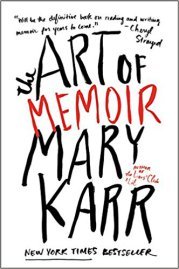 I write novels; I don’t write memoirs (so far, anyway). But I still gleaned a ton from Mary Karr’s dead-on book The Art of Memoir. The whole book is a masterclass in vigorous vulnerability and integrity, but one of the best object lessons I took away was how I, as a novelist, could apply a memoirist’s rigorous approach to show, don’t tell.
I write novels; I don’t write memoirs (so far, anyway). But I still gleaned a ton from Mary Karr’s dead-on book The Art of Memoir. The whole book is a masterclass in vigorous vulnerability and integrity, but one of the best object lessons I took away was how I, as a novelist, could apply a memoirist’s rigorous approach to show, don’t tell.
Here’s a new exercise, inspired by Karr, that I now use all the time:
Imagine for a moment you’re not writing fiction. Instead of being a novelist, you’re now a memoirist, writing about real events from your own life. Pick something in your life that still causes you high emotion.
For the sake of illustration, let’s say you’re going to write about how an older girl at school bullied you mercilessly. You were her victim; she was clearly the antagonist in the scene; and you want your readers to understand this.
But here comes the tricky part. You are not allowed to offer any commentary on your relationship with this bully: how she made you feel back then or how her effect upon you still clangs through your life today. You are not allowed to tell readers she was the inexcusable abuser of an innocent child.
You are only allowed to show readers what happened. Nothing more, nothing less. You can’t tell us she was mean to you, but you can show us when she pulled your hair. You can’t tell us you think she was probably the victim of abuse in her own family, but you can show us that moment when you found her crying in the stairwell. You can’t tell us she scared you out of her mind, but you can show us that day you threw up before going to school.
Even just imagining these scenarios, you can see how much more power there is in the showing than the telling.
Now, apply this to your fiction. This is arguably a little trickier, since now you’re not remembering real details, but creating scenarios that will evoke your characters’ emotions. Doing so will not only enable you to create a stronger scene and a more vivid reading experience, it will also force you to dig deep for story events that properly align with your character’s emotions and motivations at every turn.
Remember: you’re not allowed to tell readers your character is conflicted in her love life. You have to show them why. You’re not allowed to tell readers your character is scared. You have to make them feel the fear too.
In short, you’re not allowed to slant your scenes. You can’t massage the commentary to force readers to see it how you see it. You have to make them see it all for themselves.
3. Don’t Explain the Context
Here’s the awesome thing about good showing: if you’re doing it right, you don’t ever have to hold readers’ hands by telling them.
Still, “reinforcement telling” is an easy crutch to hang onto. I know because I do it all the time.
I’ll do my best to write an evocative scene showing readers all the important actions, senses, and especially emotions. And… then I’ll start doubting myself and throw in a paragraph or two explaining the character’s mental process in the midst of it all.
For example, here’s a recent chunk I’ve cut from my WIP Dreambreaker during my first editing pass:
Nothing here was simple—not her uncle’s involvement, not her relationship with her Gifted, and certainly not her obligations to her crown and her country, which demanded another set of obligations entirely to Rivalé. If she’d been a simpler woman, perhaps she could have thrown all that over. But she wasn’t. That woman had been born and had died all within the few hours that ended the last war. Instead, she chased her demons back inside their dungeon and closed the door.
I really liked this paragraph, describing my female lead’s interiority in a complicated scene. But… I didn’t need it. I chopped it and immediately could feel that the scene breathed better without it. Thanks to recent beta reader (thank you, Kate Flournoy!), I’m finally starting to consistently recognize where I’m doing this in my fiction.
But, you may be thinking, what if I really do need to explain my character’s mental process?
Fair question. In fact, that question is one of the reasons this final pitfall is so easy to fall into and so hard to spot. After all, if you’re writing a deep POV, every single word is more or less in your character’s head. Readers want to be inside his head. They want to know what he’s thinking and feeling. And sometimes they’re even going to want it spelled out for them.
So here are a couple fast questions I’ve developed to help me gut-check when an introspective paragraph is worthy of inclusive—and when it’s just getting in the way by explaining the scene’s otherwise strong context.
Q1: Is this information evident from the context? Would readers understand this emotion or motive without the explanation?
Q2: Could I delete this telling explanation from the narrative and instead create context within the scene that shows it?
Q3: Could I shorten this internal monologue? (Look for spaces in the narrative where you find your natural reading pace taking a “breath.” Upon re-reading, if I find myself a little surprised that the narrative is going on, instead getting back to the action, I know I’ve gone on one sentence too long.)
Now a caveat: it’s perfectly fine to write out all this telling stuff—especially the parts where you’re working through your characters’ emotions—in the first draft. Get it all out there on paper if you need to. But think about it as if you’re explaining it to yourself. Once you’ve got it out of your system, go back and ruthlessly delete useless tellings. Readers don’t need them nearly as much as we do.
***
The better you get at refining show, don’t tell, the better your writing will grow on every single page. Use these tips to gut-check your progress and clear away any useless clutter getting in between your readers and your story.
Wordplayers, tell me your opinions! What has been your greatest challenge with show, don’t tell? Tell me in the comments!
http://www.podtrac.com/pts/redirect.mp3/kmweiland.com/podcast/show-dont-tell-tips.mp3
Click the “Play” button to Listen to Audio Version (or subscribe to the Helping Writers Become Authors podcast in iTunes).
The post 3 Tips for Improving Show, Don’t Tell appeared first on Helping Writers Become Authors.
September 17, 2018
What Do You Want Me to Write About?
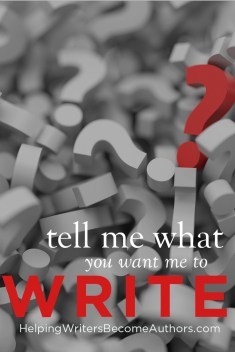 Hey, everybody!
Hey, everybody!
I’m making myself a bit sparse this week as I’m in the middle of moving. But I want to take the opportunity to flip things on its head this week and ask you to tell me something.
What would you like me to write about?
Is there a writing subject that’s really got your interest right now?
How about a gnawing question you just can’t figure out?
In short, as I start gearing up for a new round of posts and podcast episodes, I’d like to make sure I’m serving your needs as best I can.
Leave me a comment and tell me what post you’d most like me to write for you.
And thanks!
Wordplayers, tell me your opinion! What writing topic or question would you like me to talk about in future posts? Tell me in the comments!
The post What Do You Want Me to Write About? appeared first on Helping Writers Become Authors.
September 10, 2018
3 Tips for Writing a Story That’s Better Than Its Flaws
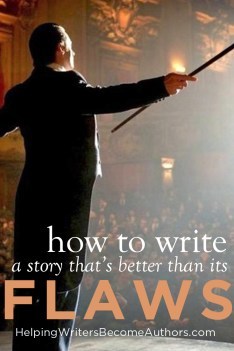 Steven Schwartz (composer and/or lyricist for musicals as varied as Pocahontas, Wicked, The Prince of Egypt, and Enchanted) has said musicals are about structure first and foremost.
Steven Schwartz (composer and/or lyricist for musicals as varied as Pocahontas, Wicked, The Prince of Egypt, and Enchanted) has said musicals are about structure first and foremost.
If you get the structure right, then a multitude of sins can be forgiven.
This is certainly the case in The Greatest Showman, whose sins are multitudinous. Any selection of critics will tell you all its problems, from ignoring the problematic life Barnum actually lived, to its relatively simplistic structure and lack of historical substance.
But it works. If you’re judging by how leggy it was in theaters (very), how many copies of the album have sold (a million) or been streamed (a billion), something about The Greatest Showman connects with audiences. That something is the way Pasek and Paul’s songs tie theme to structure and pull the audience along for the ride.
3 Tips for Writing a Story That’s Better Than Its Flaws
Six of its eight songs (and three reprises) hit plot points, and hit the timing of those plot points to the minute in five of those six cases. A seventh song is the all-but-required Broadway “I want” song, which works in this case as a delineation of What the Protagonist Wants and What the Protagonist Needs. Theme is present in every song in some way. And, most interestingly, through the work of structure, Barnum is revealed as his own biggest antagonist.
Here are three reasons Greatest Showman still connected with audiences, and how you can go about writing a story that’s better than its flaws.
1. The Songs Hit Plot Points
In this 97-minute movie, more than half of which is music, the plot points come fast, often only minutes apart. To review its structure and songs:
Hook: A young P.T. Barnum dreams of running what will become the circus in the opening number “The Greatest Show.”
Inciting Event/Key Event: Barnum loses his desk job and decides to open a museum of curiosities. This is one of two plot points that isn’t set to music.
First Plot Point: Barnum decides to include living curiosities in his museum. “Come Alive” presents his call to action to the cast of the subplot.
First Pinch Point: While he’s obtained the Thing He Wants, his Ghost keeps him from being satisfied, leading him to court the bourgeoisie through Carlyle in “The Other Side.”
Midpoint: Barnum rejects the Thing He Needs to keep pursuing the Thing He Wants, underscored by Jenny Lind’s song choice, “Never Enough.”
Second Pinch Point: Barnum’s wife sings “Tightrope” while Barnum leaves New York for Lind’s opera tour and Carlyle is left in charge of the circus. His family and his business falter without him.
Third Plot Point: The tour is canceled, and the circus is set aflame. While isn’t set to music, it is bookended by “Tightrope” and Barnum’s “From Now On.”
2. Theme Permeates the Musical Numbers
In “A Million Dreams,” Barnum sings that “dreams for the world we’re gonna make” keep him awake at night. The Thing He Wants is to provide a stable life for his wife and children, one he never had as an impoverished boy. In the same song, his wife provides the counterpoint to the Thing He He Wants: the Thing He Needs. “Share your dreams with me. … Bring me along.” All he needs is his wife and family, but his Ghost leads him to crave more.
That more, though, is “never enough.” At the Midpoint, Barnum has the Thing He Wants and has not yet lost the Thing He Needs. Reaching that goal wasn’t enough. Stealing the stars from the night sky, towers of gold, fame and notoriety, nothing satisfies him. Barnum apparently misses a quiet lyric that Jenny Lind sings: “Darling, without you.” His truth is none of it is enough without the support of family, but Barnum is insatiable.
Finally, just after the Third Plot Point, Barnum’s found family, the cast of the circus, approach him at his lowest point and remind him what he’s done for them. Barnum then sings of all he’s accomplished, but claims they were “someone else’s dreams, pitfalls of the man I became.” He finally relearns that his family, both nuclear and found, is most important, and this truth permeates the remainder of the movie. He has, finally, understood the Thing He Needs.
3. Structure Reveals the True Antagonist
The critic and the mobs, who are set up as the external antagonists in The Greatest Showman, don’t work. They aren’t personal enough, don’t have clear motivations, and are hardly presented as people at all. Since they aren’t given songs of their own, we don’t see their motivations as we do other characters. Perhaps this was a choice necessitated by what they opposed (those who find this theater a spectacle would not join in the singing), but it was one that left me, even on a first viewing, disappointed.
However, structure shows that there are strong Pinch Points. Barnum, through his Ghost, has become the antagonist. His insecurities about his rich in-laws looking down on him lead him to invite Carlyle to join the circus to help him appeal to the upper classes. While “The Other Side” is a fun, almost seducing song, its location at a pinch point shows that this is Barnum unable to accept the Thing He Needs. He’s about to become the antagonist.
Since he has by the First Pinch Point received the basis of the Thing He Wants, and never lost the Thing He Needs, the middle of the story switches its focus slightly from Barnum to the acts he curates. The love story is played out (“Rewrite the Stars”); “curiosities” who were uncomfortable with who they were come out of their shell (“This Is Me”). Within the sub-world Barnum creates, others are free to explore the theme of found family and acceptance.
Here, Barnum is both its creator and its greatest threat. This is most clear in “Tightrope,” which marks the Second Pinch Point. Barnum has decided to take the singer Jenny Lind on a national tour that will cost him a fortune before it turns a profit, leaving Carlyle in charge of the circus, and his wife and daughters alone. No one wants him to go. The contrast between the circus failing without him and Barnum’s courting the social elite plays over the soundtrack of his wife reminding him that he has given up What He Needs.
***
Despite its flaws, The Greatest Showman provides an excellent example of how musicals use songs to hold together the structure, how to follow a Cinderella arc, and how a well-structured story can provide clues about what’s going on beneath its surface.
Wordplayers, tell me your opinions! What do think is the single most important element in a story that works despite its flaws? Tell me in the comments!
The post 3 Tips for Writing a Story That’s Better Than Its Flaws appeared first on Helping Writers Become Authors.
September 3, 2018
Do You Have Sloppy Writing Habits? (And 4 Things to Do About It)
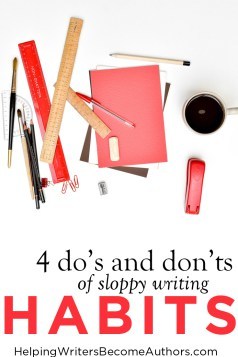 The question I want to ask today is whether sloppy writing habits are a deterrent to success, a natural and unavoidable part of the creative process, both, or neither.
The question I want to ask today is whether sloppy writing habits are a deterrent to success, a natural and unavoidable part of the creative process, both, or neither.
I’ve never met the writer (myself included) who didn’t suffer from sloppy writing habits. These habits fall into a number of categories—everything from sloppy handwriting to sloppy writing processes to sloppy writing techniques.
“Sloppy” is an inherently negative word that reeks of frustrated parents cajoling unwashed teenagers to impose order on their personal batcaves. And yet—sloppiness also seems kind of inherent to all things creative. Indeed, some researchers have gone so far as to famously insist “a messy desk is a sign of genius.”
Naturally, as a neat freak, I take exception to this. I like order and schedules. I hate chaos and spontaneity.
I’ve been that way since childhood. My sister, with whom I shared a bedroom (aka battle zone) for most of our childhood, recently dug up a “Sisters’ Constitution” I created for her to sign when I was around twelve and she was around eight. This highly legal and formal document gravely promised we would both “close my drawers, put my stuff away, respect my sister’s stuff, keep my stuff on my side of the room.” (She pointed out recently that it seemed a little unfair I hadn’t balanced it with clauses promising to “be nice to my little sister, leave the door open at night when my sister is scared, and let my sister play with me.”)
As a writer, my entire journey toward improving myself and my stories has been largely geared around ideas of organization. Over the years, I have created a streamlined writing process that allows me to be as effective as I can be at any given moment. Naturally, much of what I teach on this blog reflects that. I’m a proponent of outlining, story structure, schedules, logic, and linearity.
But during one of my morning walks recently, I started pondering a comment a fellow writer had made to me that expressed his acceptance of his own sloppy writing habits. He said something along the lines of “that’s just how it is.”
That got me thinking about my preconceptions about the place of sloppiness in the life of a writer, its almost stereotypical omnipresence in the lives of writers in general, and both its relationship to and influence upon art itself.
Why Writers Can Get Away With Sloppy Writing Habits
So. Sloppy writing habits. Is that really “just how it is”?
I think, upon reflection, the obvious answer is: “Yeah, totally.”
Almost any perusal of any writer anywhere—his or her lifestyle, writing habits, creative process, even writing techniques themselves—show us that writers are, in general, almost unavoidably sloppy.
We could argue that creativity is itself a sloppy and ungovernable process. Although I ultimately disagree with this, it is true up to a certain extent. There’s a reason Legos come out of the box as a bazillion seemingly chaotic pieces and only slowly end up as the recognizable Death Star. Even more than Legos, writing is a tremendously complex and complicated art form that requires the confluence of dozens of unique skill sets.
More than that, any organization within the writing life itself—the mindset of being a writer, the overarching process of creating a novel, or the daily routine of putting words on paper—requires an organization of ourselves on a personal level much deeper than anything to do with the writing itself. And that, of course, is the vocation of a lifetime.
In short, sloppiness of one degree or another (and usually a lot of others) is inevitable.
More than that, I’m going to posit the art of storytelling on paper is possibly more forgiving of sloppiness than just about any other creative discipline.
Think about it.
Something I say over and over is, “There’s no such thing as a perfect story.” That’s not actually true, since perfection always exists, as least theoretically. When I say that, what I actually mean when I say that “nobody ever has or ever will write a perfect story.” Phew. Pressure’s off.
However, what that means by extension is that every story you’ve ever loved, you’ve loved in spite of some inevitable sloppiness on the author’s part. Maybe the plot structure was a little off; maybe it was even a lot off. Maybe the characters didn’t ring quite true. Maybe there were plot holes requiring massive suspension of disbelief on your part. Maybe it was dumb as all get out and you’re actually embarrassed to admit you liked it—but you did because it connected with you on an emotional level and made you feel something you cherish.
On the other end of the spectrum, even if the story’s end product is relatively flawless, chances are the author’s process of getting to that end product wasn’t so flawless. He spent nights pacing the floor, pulling his hair out with frustration and self-doubt. She rewrote the entire thing twelve times. He wrote only sporadically—six hours one day, not a thing for months, only fifteen minutes another day. She neglected to research important details until deep into the revision phase—and had to ditch a whole subplot when it proved unrealistic.
But readers don’t really care. The writer finally got to an end product that was good enough despite its inevitable flaws. It’s not like a dance where one wrong move throws off the entire routine. Or a painting where a smush of paint in the wrong place ruins the whole thing. As long as a story is “good enough,” readers are primed to forgive a story (and, by extension, its writer) for not being perfect.
So, yay! Long live sloppiness! Right?
4 Do’s and Don’ts of Sloppy Writing Habits
Can you be a sloppy writer—and still be a good writer? A successful writer?
Unconditionally, yes.
But does that mean you should be a sloppy writer?
There’s a balance here, as with almost all aspects of the creative life, but I still believe the optimum leans more heavily away from sloppy writing habits and toward methods and mindsets that promote effectiveness, efficiency, clarity, and even simplicity.
We seek the balance between creativity and logic, spontaneity and discipline, instinct and knowledge because we wish to optimize all aspects of the craft (and life itself, which is ever a balance between subconscious and conscious). I have no desire to discipline all the creativity out of my art. But I also have no desire to let the unpredictable wildness, and, yes, sloppiness, of raw creativity govern my life and my career.
This is a personal balance. We’re all different people. I crave order; others feel stifled by it. Naturally, my personal approach to writing, on every level, has focused on optimizing my strengths and minimizing my weaknesses. This is what we all must do in figuring out which sloppy writing habits unleash our creativity and which inhibit us by unnecessarily complicating the process.
To that end, hear are several do’s and don’ts to consider in refining your own balance.
1. Don’t Make Excuses for Your Sloppy Writing Habits
The first step is calling a spade a spade. Saying “oh I’m just a pantser” or “oh I’m just a plotter” like they’re psychological conditions is not specific or helpful. Dig a little deeper and identify the habits you’re clinging to that are perhaps causing excesses on one side or the other of the writing balance.
Correcting sloppy habits—of any stripe—is difficult. Sometimes it’s easier to keep doing what we’re doing rather than trying to figure out what the problem is and how to fix it. But muddy thinking is never helpful to a writer, of all people.
If your desk is a mess, own it (after all, maybe it means you’re a genius). Don’t make excuses. Dig down and figure out why you have a hard time keeping it clean. Maybe it’s a good reason; maybe it’s not. But it’s important to know which it is, in order to optimize your response.
2. Do Identify the Parts of Writing That Are Most Difficult for You—And Do Something About It
Most sloppy writing habits—even ones we aren’t consciously aware of as sloppy—are the result of aspects of the writing life that are difficult for us.
One sloppy habit I’m currently working on conquering is my inherent laziness with certain aspects of causality within my plots. Oh, that character motivation doesn’t totally make sense? Or that battle choreography isn’t realistic? Or that plot hole got deeper because the fantasy physics didn’t quite work? Oh, well.
As a writer, I get almost claustrophobically bored with this stuff. I just want to race on to the good bits—character relationships, epic imagery, thematic grist. But, of course, as a reader, I’m much less likely to appreciate these ragged loose ends in someone else’s story. I recognize that, and I’m gritting my teeth and working to improve these difficult parts of my writing.
For you, the difficult bits might be understanding story structure, creating coherent POVs, maintaining a consistent writing schedule, avoiding procrastination temptations, or organizing research notes.
Whatever the case, dig around to identify what aspects of your writing you’ve currently got chained down in your mental dungeons where you don’t have to look them in the eye. Maybe it’s time to let them into the sunlight and start doing some rehabilitation.
3. Do View Writing as a Discipline—With Its Own Guidelines
Here’s a truth: A writer can remain in total ignorance of all higher concepts of theory and technique. This writer can ignore every good writing habit every known, throw onto the page a story that is strictly speaking a sloppy mess, and still connect with writers. (I’m sure you can think of a few popular authors today who might very well fit this description.)
You don’t have to view writing as a discipline in order to be a writer, or even to be a good(-ish) writer. But if you want to write to your potential—if you want to conquer your demons—if you want to get consistently and predictably better as both the art of writing and the process of writing—then viewing and treating writing as a discipline is your surest bet.
As a discipline, writing provides certain evident principles for slowly straightening up your mental desk and finding your best balance between the sloppiness of creativity and the structure of discipline. Somewhere in there, I guarantee there’s a sweet spot where everything sings together.
4. Don’t Ban Sloppiness Entirely
If we equate sloppiness, to a certain degree, with creativity, then we surely don’t want to entirely ban sloppiness from our lives. However much we may be able to learn to a harness a predictable flow of creativity, creativity itself will never be linear, logical, or even neat.
Diminishing the negative effects of sloppy writing habits is about clearing away unnecessary clutter so we can tap in as directly and powerfully as possible to the raw creativity itself. But we never want to block or even structure that initial creativity.
Most people view the concept of outlining as one of the most structured of writing techniques. So it may seem ironic to suggest that a free-form outlining style (aka stream-of-conscious brainstorming) is actually incredibly adept at channeling raw creativity. It does this by separating and protecting baby creativity from the most technical and precise of all writing techniques—the creation of the word-by-word narrative of the story itself. This is why I do all my story creation in an in-depth outlining phase, which then leaves the structured and disciplined aspects to stand on their own feet during the first draft.
Whatever your arrangement of the foundational aspects of creating, organizing, and getting your story down on paper, always check your balance. Discipline should optimize creativity. It should never inhibit it.
***
As always, conquering sloppy writing habits is really just the discipline of knowing ourselves—recognizing what we’re doing, why we’re doing it, how we work best, and how to create life choices that find and optimize our best balance.
Wordplayers, tell me your opinion! What are some sloppy writing habits you’re currently struggling with? Tell me in the comments!
http://www.podtrac.com/pts/redirect.mp3/kmweiland.com/podcast/sloppy-writing-habits.mp3
Click the “Play” button to Listen to Audio Version (or subscribe to the Helping Writers Become Authors podcast in iTunes).
The post Do You Have Sloppy Writing Habits? (And 4 Things to Do About It) appeared first on Helping Writers Become Authors.
August 27, 2018
5 Ways to Use the Enneagram to Write Better Characters
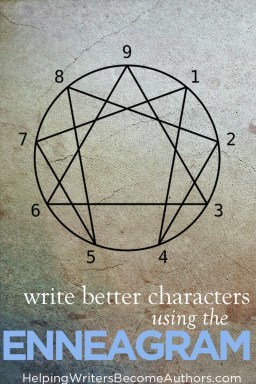 The Enneagram. Maybe you’ve heard of it. Maybe you’ve even used the Enneagram to write better characters.
The Enneagram. Maybe you’ve heard of it. Maybe you’ve even used the Enneagram to write better characters.
Like Myers-Briggs, Socionics, and the Four Temperaments, the Enneagram is one of many systems within the study of personality theory. These systems are designed to identify the patterns found in the different ways we approach various aspects of life, so we might better study and understand ourselves and others.
In short, the Enneagram is not only a useful life tool, it’s also the perfect character-creation tool.
I’ve always been interested in personality theory. Let’s face it, I just like theories (come to me, story theory, my love). But I don’t see it as any kind of coincidence that my interest in characters and stories dovetailed so conveniently with the ever-deepening rabbit hole of personality theory.
I’m not alone. In fact, my introduction to the Enneagram, many years ago, was on romance author Laurie Campbell’s site, where she offered a brief description of the system’s nine types as, you guessed it, a character tool. Since then, I’ve pursued Myers-Briggs—another personality-typing system—in some depth, but only this year have I finally dived headlong into the Enneagram.
I’m not exaggerating when I say it has changed my life—and my writing.
What Is the Enneagram?
Unlike Myers-Briggs, which is a “neutral” system focused primarily on the differing ways people take in and use information, the Enneagram is often called an “ego-transcendence tool.” Sounds all lofty and new-agey, but it’s really just code for “this-is-gonna-hit-you-where-it-hurts.”
(Side Note: I read once, in relation to Myers-Briggs, that if you typed yourself and had nothing but excitement about your discoveries, you very likely mistyped. A true typing is going to show you stuff about yourself that maybe you’d rather not look at. In short, you can be pretty sure you’ve found your type when you end up muttering, “Ah, dang.” If that’s true of Myers-Briggs, it’s about ten times truer of the Enneagram. But I digress.)
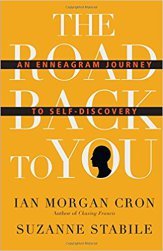 In their book The Road Back to You (which is a great overview of the Enneagram, uncomplicated by denser aspects of the theory), Ian Morgan Cron and Suzanne Stabile introduce the Enneagram like this:
In their book The Road Back to You (which is a great overview of the Enneagram, uncomplicated by denser aspects of the theory), Ian Morgan Cron and Suzanne Stabile introduce the Enneagram like this:
The Enneagram teaches that there are nine different personality styles in the world, one of which we naturally gravitate toward and adopt in childhood to cope and feel safe. Each type or number has a distinct way of seeing the world and an underlying motivation that powerfully influences how that type thinks, feels, and behaves….
The Enneagram takes its name from the Greek words for nine (ennea) and for a drawing or figure (gram). It is a nine-pointed geometric figure that illustrates nine different but interconnected personality types. Each numbered point on the circumference is connected to two others by arrows across the circle, indicating their dynamic interaction with each other.

The Enneagram is a vast and deep system, impossible to completely summarize in a post like this, so I won’t even try. However, perhaps the simplest way to sum it up is to say that the Enneagram is designed to call baloney on the defensive lies we have been programmed from childhood to tell ourselves about ourselves and the world.
How I Discovered the Enneagram
My experience with the Enneagram went something like this.
I’d decided long ago, after reading the brief descriptions on Laurie Campbell’s site, that I was a Five: The Investigator. Introverted, studious, quirky. Yeah, totally. Fives are awesome!
Confidently, I started reading Cron and Stabile’s book—until I hit the chapter about the Three: The Achiever. It was like the authors reached out, grabbed their own book, and smacked me between the eyes with it. It was a total oh-dang moment.
Don’t get me wrong. Threes are awesome too. Productive, adept, ambitious. But I immediately knew, without question, I was a Three simply because so much of what I read hurt.
I would have been totally cool (too cool) with the Five’s problems of hyper-independence, trust issues, and sarcasm (because, hello, that’s all my favorite characters ever). I’ve always considered myself a relatively self-aware, self-honest person, but reading about the Three’s motivations made me face things about myself I’d never been willing to admit or face, things I really didn’t like about myself, such as the driving need for the approval of others and a pervasive underlying belief in, essentially, “salvation (and love) by works.”
For me, the revelations that followed were toppling dominoes that unlocked answers to questions I’d been asking about myself and my life for a long time. It was painfully liberating. My awareness of my Three-ness has since allowed me to acknowledge and own aspects of myself I’ve long hidden from, which, of course, now means I have to deal with them. It has been and continues to be incredibly exciting.
And now I get to use these new approaches to life, people, and the self to help me (I hope) write better characters.
Use the Enneagram to Write Better Characters
There is just so much to say about how you can use the Enneagram to write better characters. I’m not even going to get into the wings, triads, integration/disintegration, instinctual variants, or tritypes (the latter of which I have yet to study in any depth but which, I think, bears out I wasn’t totally wrong in my initial association with the Five).
 It was in reading Don Richard Riso’s Enneagram “bible” Personality Types that I was truly blown away by both the beautiful complexity of the system and its easy applicability to writing characters. After listening to the book on audio, I immediately bought my own copy and added it to my pile of easy-reach writing-resource books. I will be referring to it regularly when I start outlining my next book.
It was in reading Don Richard Riso’s Enneagram “bible” Personality Types that I was truly blown away by both the beautiful complexity of the system and its easy applicability to writing characters. After listening to the book on audio, I immediately bought my own copy and added it to my pile of easy-reach writing-resource books. I will be referring to it regularly when I start outlining my next book.
Following are the five primary ways I plan to use the Enneagram to write better characters in the future.
1. Typing Characters, the Fast and Easy Way
 Let me start with a slight digression: I’ve been studying Myers-Briggs for years. I love it. In its own way, it too completely changed my life and my writing. But I actually find the system really difficult to use in typing my characters. For whatever reason, I can type other people’s characters with reasonable confidence, but I can’t type my own to save my life. For example, I have progressively typed Chris Redston, the protagonist of Dreamlander as: ISFJ, ESFJ, INFJ, ISFP (with ponderings about ISTJ and INTJ thrown in for good measure).
Let me start with a slight digression: I’ve been studying Myers-Briggs for years. I love it. In its own way, it too completely changed my life and my writing. But I actually find the system really difficult to use in typing my characters. For whatever reason, I can type other people’s characters with reasonable confidence, but I can’t type my own to save my life. For example, I have progressively typed Chris Redston, the protagonist of Dreamlander as: ISFJ, ESFJ, INFJ, ISFP (with ponderings about ISTJ and INTJ thrown in for good measure).
(Second Side Note: I actually have serious doubts that any author is able to truly write a character with differing cognitive functions from their own. For example, as an INTJ, I might be able to fake an ESFJ character based on ESFJs I personally know, but because I share no functions with that type, can I really write about the mental process of a character who absorbs information via Introverted Sensing and makes judgments via Extroverted Feeling? Maybe, but I kinda doubt it.)
In contrast to Myers-Briggs, the deceptive simplicity of the Enneagram makes it much easier to confidently recognize a character’s likely type/number and use it as a guideline while writing. Maybe it’s just me, but I find it far less complicated to look at a character and recognize, “she’s a One,” rather than running through a litany of criteria to determine her four cognitive functions and their order in her Myers-Briggs stack.
When I do figure out a character’s Enneagram, I instantly see them a little clearer, and I instinctively know just a little bit more about them. (Chris, by the way, is a Six. In case you were wondering.)
(Third Side Note: Although there is some overlap, the Enneagram is an entirely different system from Myers-Briggs, with an entirely different focus. Typing a character according to the Enneagram doesn’t accomplish the same things as will typing that character according to Myers-Briggs. So if you feel qualified—or, like me, literally unable to resist, do both!)
2. Keeping Characters Consistent: Strengths and Weaknesses
One of the Enneagram’s primary focuses is each type’s inherent strengths and weaknesses. This is convenient, since one of a writer’s primary focuses is each character‘s inherent strengths and weaknesses. Indeed, we could argue that the pairing of strength/weakness is one of the most important aspects of character, and thus story, since it drives everything that happens in the plot and theme.
In expanding on the chart at the beginning of the post, a super-simplistic approach to each type’s strength/weakness might look like this:
One, The Reformer: Responsible and idealistic/judgmental and hyper-perfectionistic
Two, The Helper: Kind and generous/intrusive and needy
Three, The Achiever: Productive and adaptable/overly image-conscious and out of touch with emotions
Four, The Individual: Creative and idealistic/self-absorbed and unrealistic
Five, The Investigator: Perceptive and self-reliant/emotionally-detached and cynical
Six, The Loyalist: Loyal and engaging/reactive and fearful
Seven, the Enthusiast: Optimistic and fun/impulsive and undisciplined
Eight, the Challenger: Bold and decisive/domineering and combative
Nine, the Peacemaker: Calm and reliable/passive-aggressive and unmotivated
Once you really start studying the system, you realize there’s so much more to it than just this. But even just these simple starting points give you an intuitive strength/weakness pairing for your character that sets everything up right for a solid character arc.
3. Identifying the Character’s Motivation, Want, Need, and Backstory “Ghost”
Because of the Enneagram’s talent for pointing a finger at painful motivations arising from our pasts (especially our childhoods), it’s perfect for figuring out the backstory Ghost motivating your character’s goals in your main story.
The Ghost (sometimes called the Wound) is a hole in your character’s self. It’s the hole where the Lie the Character Believes first started growing, and it’s the hole she must climb out of if she’s to grow into wholeness by the end of her arc.
Again, not so coincidentally, the Enneagram offers a basic Lie for each type:
One: Mistakes are unacceptable.
Two: I am not lovable.
Three: I am what I do.
Four: No one understands me/there is something wrong with me.
Five: I am not competent to handle the demands of life.
Six: The world is not safe.
Seven: I can’t count on people to be there for me.
Eight: Only the strong survive.
Nine: I don’t matter much.
Starting with some iteration of the above for your character, you can start extrapolating consistent motivations and goals within the specific needs of your plot.
4. Charting Character Arcs
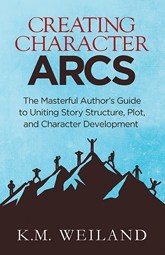
Not only is the Enneagram system helpful in setting up character arcs, it’s also helpful in double-checking that the progression of your character’s arc is consistent and realistic.
One of the main reasons I ended up buying a hardcopy of Riso’s Personality Types was that the book methodically charts nine levels of “health” for each type. It divides these nine levels into three apiece under the headings of Healthy, Average, and Unhealthy. Once you know your character’s specific story Lie and the type of arc you want him to follow, you can reference Riso’s lists to nail down how a healthy, average, or unhealthy person of this type would behave.
For example, if you’re writing a Positive Change Arc for a generally likable character, you’re probably going to to start him out in one of the Average categories and let the story’s events help him progress to Healthy. Or maybe you’re writing a Negative Change Arc, about a descent into unwellness or psychosis, which brings me to…
5. Writing Better Bad Guys
For me, bad guys have always been one of my challenges. A large part of this was a struggle to find suitable motivations for their evil deeds. “Oh, they’re just crazy” is an easy out that doesn’t give due diligence to what should be one of the strongest characters in the story.
Yet another reason I was psyched by Riso’s “health charts” was that they immediately grounded my understanding of what would motivate a deeply unhealthy person to commit deeply unhealthy acts. At the bottom level of psychosis for each type (which is almost never reached without either deep-seated childhood trauma or a physiological catalyst), Riso suggests the “ultimate end” each type is most likely to fall to:
One: Punitive Sadism
Two: Hypochondria and Martyr Complex
Three: Murder (!)
Four: Suicide
Five: Schizophrenia
Six: Masochism
Seven: Addiction and Manic-Compulsive Behavior
Eight: Megalomania
Nine: Dissociative disorders
Personally, I take these with a massive grain of salt (because how likely is it that all, or even the majority of schizophrenia sufferers, are Fives?). But it is a useful guide for following the descent of personal and mental un-health to a consistent ending point. If you read all the sections in Riso’s book, it becomes easy to provide a proper motive to a character who is undergoing a realistic personal descent.
***
This is just the tip of the iceberg when it comes to the Enneagram. I’ve been studying it for months now and have barely scratched its surface. If you’re interested in digging deeper, both for yourself and your characters, I recommend starting with the book The Road Back to You by Ian Morgan Cron and Suzanne Stabile and following it up with the significantly heavier and more in-depth Personality Types by Don Richard Riso with Russ Hudson.
Brace yourselves, half fun, and get ready to say: Oh, dang. :p
Wordplayers, tell me your opinions! Have you ever used the Enneagram to write better characters? Tell me about it in the comments!
http://www.podtrac.com/pts/redirect.mp3/kmweiland.com/podcast/5-ways-to-use-the-enneagram-to-write-better-characters.mp3
Click the “Play” button to Listen to Audio Version (or subscribe to the Helping Writers Become Authors podcast in iTunes).
The post 5 Ways to Use the Enneagram to Write Better Characters appeared first on Helping Writers Become Authors.
August 20, 2018
Writer’s Envy—And 3 Thoughts on What to Do About It
 Last year, one of your writing buddies landed your dream agent. This year, they published with a great publisher. Now, they just sent you a #happydance email, telling you they’ve been nommed for your genre’s biggest award. You’re happy for your friend. Really, you are. But try as you might, your gut just closed up with a sick but all-too-familiar feeling: writer’s envy.
Last year, one of your writing buddies landed your dream agent. This year, they published with a great publisher. Now, they just sent you a #happydance email, telling you they’ve been nommed for your genre’s biggest award. You’re happy for your friend. Really, you are. But try as you might, your gut just closed up with a sick but all-too-familiar feeling: writer’s envy.
The writing community is a great place, full of sensitive, supportive people all trying to prioritize the honesty of their art and the worthiness of chasing their dreams. But the writing community also has its dark sides, and none is perhaps more pervasive or insidious than a writer’s envy. I daresay only the most centered among us have evaded it entirely.
But why? Other than the fact we’re all humans and envy is perhaps one of the easiest of all human failings, why do writers seem particularly susceptible to the poison of envy?
And just to mix things up, here’s another question: Is envy really a poison?
What’s the best way to view and deal with writer’s envy?
Let’s take a look.
Writer’s Envy: Why Are We So Competitive?
Art is a cooperative.
Stories, perhaps more than any other art form, are shared experiences. In striving to hit that perfect note of verisimilitude with our writing, we are trying to share in the larger human experience, just as we are also trying to share our own personal experiences. We are tapping into a collective subconscious that resonates to the same symbolic triggers and archetypal constructs.
Most of us want, on some level, for our stories to positively impact others. We are trying to share something good with the world. Something true. Something of worth.
We are also taking what others have shared with us—both in life itself and in their art—and refashioning it, so we might reshare it yet again. Art is the ultimate recycling system: nothing is ever wasted; everything is reused.
I believe it is an absolute truth that when one artist succeeds, the rewards belong to all of us. When a good story (or song or picture) is given to the world, and then given a platform from which it can be shared with the greatest number of people, that is one of the most perfect things in life.
In short, on a purely artistic level, there is no competition. There is only cooperation. Your art makes my art better. My art makes your art better. And we all benefit.
Buuuuuuutt…..
Pure artistry, like any form of absolutism, doesn’t actually operate down here in the grungy real world.
Down here, it’s Rottweiler-eats-Chihuahua.
Down here, it’s all my-ego-is-a-ravenous-insecure-whining-powerful-beast-who-wants-everyone-else-in-a-bleeding-pile-under-my-jackboots.
4 Reasons for Writer’s Envy
So why? Why are artists—who are supposed to be all wise and ethereal and above the common longings for worldly acclaim—so susceptible to dark and seemingly useless feelings of envy?
1. We’re Not Wise, Ethereal, or Above It All
We’re just blokes and blokesses who, perhaps even more than others, are struggling really, really hard to make sense of our own hyper-abundant human frailties.
2. We’re Vulnerable
There are technical aspects of excellence involved in every art form. Just like a master carpenter, we take pride in our ability to craft solid structures and beautiful prose. And just like that carpenter, we’re going to be bummed when our skills don’t measure up to where we want them to be.
But, even more than our skills, we’re putting ourselves on display. When that is found wanting, in any measure, it hurts ridiculously. Someone criticizing our work might feel their comments are on par with saying, “I don’t like your shirt,” when what we feel they’re really telling us is, “I don’t like your face.”
3. We Have a Hard Time Succeeding
Book publishing isn’t obviously competitive in the sense that my achieving my dreams will rule out your achieving your dreams, and vice versa. Even still, it certainly seems like there are limited opportunities for success. It’s hard to make it as a writer. Very few of us make any money off writing, fewer still make a living off it, and very few indeed become famous millionaires. When someone reaches one of those coveted milestones, it’s easy to knee-jerk into feeling our own chances just got slimmer.
4. We Tend to View Other People’s Successes as a Yardstick of Our Own Failure
When another writer succeeds—especially someone you know personally—it’s hard not to feel as if their good fortune isn’t a giant spotlight revealing everything you, by contrast, have not achieved. They’re agented, published, bestselling, and award-winning. You… are not. Pretty stark.
Reframing Writer’s Envy: It Doesn’t Have to Be a Bad Thing
Is it possible for something objectively bad to be subjectively good?
With a little reframing, it just might be.
Envy is bad. I daresay none of us enjoys it. It sits in our guts like bad sushi. It’s sickening—literally. It makes us unhappy for others and unhappy for ourselves. And then, often, we feel bad for feeling jealous in the first place. It seems pretty irredeemable.
But envy itself is neither bad nor good. It just is. It’s a symptom—like a headache—telling us of a deeper issue.
It’s what we do with that feeling that creates either a bad experience or a good one.
Envy is telling you, first and foremost, that you want something. It might be something obvious, like: I want my book published or I want to win that award too. But even these statements are pointing to something deeper, whether it’s an unresolved insecurity or simply a dream you’ve yet to fulfill.
A writer’s envy is a flashing neon sign, reminding you about unfinished business. So often in life, we sit and we wish for a sign in answer to the old prayer: Just show me what to do! Envy is about as obvious a sign as you can ask for.
So do something about it.
But do something good.
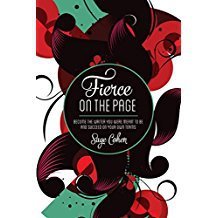 Sage Cohen, in Fierce on the Page, said:
Sage Cohen, in Fierce on the Page, said:
When envy comes up in your writing life, I propose that you don’t subdue it in the name of propriety and good citizenry. I hope you do the opposite: investigate it until you get top that place in you that says, I want, I need, I DESIRE.
Envy only becomes bad when it prompts thoughts about others. Secret wishes for another’s downfall or even just, passive-aggressively, that they might not be quite so successful until you’ve caught them up, are negative in the extreme. Worse, they’re counter-productive. Fuming—even suppressed fuming—about frustrations with another’s success just gets in the way of your ability to act productively on your own behalf.
Instead, when envy strikes, focus on yourself:
1. Identify Your True Emotional Triggers
Why are you jealous? Because it’s your dream to land that specific agent? Because right now you’re doubting your ability to even write a good sentence, much less the dreamed-of book? Because you think the other writer’s success was undeserved for a specific, quantifiable reason (i.e., “I could write a better book than that!”)?
It’s easy to gripe about other people—whether accurately or not. What’s not so easy is facing down our own motives. Looking our insecurities in the eye can be terrifying. Admitting our work isn’t yet good enough to help us fulfill our dreams is, at best, frustrating. And feeling like you’re doing everything you know how to do—and still not getting what you want—is heartbreaking.
But the only way to address a problem is to first honestly acknowledge what’s really going on.
2. Step Away From the Ego
So many of our jealousies are just plain silly. As already mentioned, art is far more cooperative than competitive. Resentment of another writer’s success is often (always?) counter-intuitive. (If you write an amazing story and I read it, I am going to be that much more likely to write a better story myself thanks to the gifts your story has given me. And then, of course, there’s the fact that if a reader reads and loves your amazing story, they’re going to be that much more pumped to read another amazing story—and maybe they’ll read mine!)
But the ego isn’t always sensible. Certainly, it isn’t easy to overcome. Just realizing and admitting a) the undeniable reality of the ego’s demands and b) it’s often childlike short-sightedness is a huge step toward redirecting its power.
Looking at the bigger picture (of life, art’s role in life, and our role in art) is a helpful re-centering trick. Humility is inevitable when we are honest about how infinitesimal each of us is within that larger picture (and yet, how each of us, supplies an inevitable butterfly effect). It then becomes easier to recognize and embrace the contributions of our fellows, rather than feeling threatened by them.
3. Act on What You’ve Learned About Yourself
Once you’ve dug down deep inside yourself to discover what’s at the root of your writer’s envy, you will have gained information you can act on. You’ve faced down your insecurities. Maybe what you’ve found is something as surface level as My characters aren’t as good as my writing buddy’s characters! or something as deep as I will never feel worthwhile unless I can write an acclaimed book!
More than that, you’ve discovered uncluttered truths about what it is you want: to be published, to be a bestseller, to win an award, to impact readers of a certain group, to write for the pure joy of it.
Your envy has given you an indication of your progress. It tells you you’re not yet where you want to be. It’s a road sign, saying “120 miles to Graceland.” You’re not there yet. But you are on the right road. Congratulate yourself—and keep driving.
Wordplayers, tell me your opinions! Do you ever struggle with writer’s envy? What do you do about it? Tell me in the comments!
http://www.podtrac.com/pts/redirect.mp3/kmweiland.com/podcast/writers-jealousy.mp3
Click the “Play” button to Listen to Audio Version (or subscribe to the Helping Writers Become Authors podcast in iTunes).
The post Writer’s Envy—And 3 Thoughts on What to Do About It appeared first on Helping Writers Become Authors.
Writer’s Jealousy—And 3 Thoughts on What to Do About It
 Last year, one of your writing buddies landed your dream agent. This year, they published with a great publisher. Now, they just sent you a #happydance email, telling you they’ve been nommed for your genre’s biggest award. You’re happy for your friend. Really, you are. But try as you might, your gut just closed up with a sick but all-too-familiar feeling: writer’s jealousy.
Last year, one of your writing buddies landed your dream agent. This year, they published with a great publisher. Now, they just sent you a #happydance email, telling you they’ve been nommed for your genre’s biggest award. You’re happy for your friend. Really, you are. But try as you might, your gut just closed up with a sick but all-too-familiar feeling: writer’s jealousy.
The writing community is a great place, full of sensitive, supportive people all trying to prioritize the honesty of their art and the worthiness of chasing their dreams. But the writing community also has its dark sides, and none is perhaps more pervasive or insidious than a writer’s jealousy. I daresay only the most centered among us have evaded it entirely.
But why? Other than the fact we’re all humans and jealousy is perhaps one of the easiest of all human failings, why do writers seem particularly susceptible to the poison of envy?
And just to mix things up, here’s another question: Is jealousy really a poison?
What’s the best way to view and deal with writer’s jealousy?
Let’s take a look.
Writer’s Jealousy: Why Are We So Competitive?
Art is a cooperative.
Stories, perhaps more than any other art form, are shared experiences. In striving to hit that perfect note of verisimilitude with our writing, we are trying to share in the larger human experience, just as we are also trying to share our own personal experiences. We are tapping into a collective subconscious that resonates to the same symbolic triggers and archetypal constructs.
Most of us want, on some level, for our stories to positively impact others. We are trying to share something good with the world. Something true. Something of worth.
We are also taking what others have shared with us—both in life itself and in their art—and refashioning it, so we might reshare it yet again. Art is the ultimate recycling system: nothing is ever wasted; everything is reused.
I believe it is an absolute truth that when one artist succeeds, the rewards belong to all of us. When a good story (or song or picture) is given to the world, and then given a platform from which it can be shared with the greatest number of people, that is one of the most perfect things in life.
In short, on a purely artistic level, there is no competition. There is only cooperation. Your art makes my art better. My art makes your art better. And we all benefit.
Buuuuuuutt…..
Pure artistry, like any form of absolutism, doesn’t actually operate down here in the grungy real world.
Down here, it’s Rottweiler-eats-Chihuahua.
Down here, it’s all my-ego-is-a-ravenous-insecure-whining-powerful-beast-who-wants-everyone-else-in-a-bleeding-pile-under-my-jackboots.
4 Reasons for Writer’s Jealousy
So why? Why are artists—who are supposed to be all wise and ethereal and above the common longings for worldly acclaim—so susceptible to dark and seemingly useless feelings of jealousy?
1. We’re Not Wise, Ethereal, or Above It All
We’re just blokes and blokesses who, perhaps even more than others, are struggling really, really hard to make sense of our own hyper-abundant human frailties.
2. We’re Vulnerable
There are technical aspects of excellence involved in every art form. Just like a master carpenter, we take pride in our ability to craft solid structures and beautiful prose. And just like that carpenter, we’re going to be bummed when our skills don’t measure up to where we want them to be.
But, even more than our skills, we’re putting ourselves on display. When that is found wanting, in any measure, it hurts ridiculously. Someone criticizing our work might feel their comments are on par with saying, “I don’t like your shirt,” when what we feel they’re really telling us is, “I don’t like your face.”
3. We Have a Hard Time Succeeding
Book publishing isn’t obviously competitive in the sense that my achieving my dreams will rule out your achieving your dreams, and vice versa. Even still, it certainly seems like there are limited opportunities for success. It’s hard to make it as a writer. Very few of us make any money off writing, fewer still make a living off it, and very few indeed become famous millionaires. When someone reaches one of those coveted milestones, it’s easy to knee-jerk into feeling our own chances just got slimmer.
4. We Tend to View Other People’s Successes as a Yardstick of Our Own Failure
When another writer succeeds—especially someone you know personally—it’s hard not to feel as if their good fortune isn’t a giant spotlight revealing everything you, by contrast, have not achieved. They’re agented, published, bestselling, and award-winning. You… are not. Pretty stark.
Reframing Writer’s Jealousy: It Doesn’t Have to Be a Bad Thing
Is it possible for something objectively bad to be subjectively good?
With a little reframing, it just might be.
Jealousy is bad. I daresay none of us enjoys it. It sits in our guts like bad sushi. It’s sickening—literally. It makes us unhappy for others and unhappy for ourselves. And then, often, we feel bad for feeling jealous in the first place. It seems pretty irredeemable.
But jealousy itself is neither bad nor good. It just is. It’s a symptom—like a headache—telling us of a deeper issue.
It’s what we do with that feeling that creates either a bad experience or a good one.
Jealousy is telling you, first and foremost, that you want something. It might be something obvious, like: I want my book published or I want to win that award too. But even these statements are pointing to something deeper, whether it’s an unresolved insecurity or simply a dream you’ve yet to fulfill.
A writer’s jealousy is a flashing neon sign, reminding you about unfinished business. So often in life, we sit and we wish for a sign in answer to the old prayer: Just show me what to do! Jealousy is about as obvious a sign as you can ask for.
So do something about it.
But do something good.
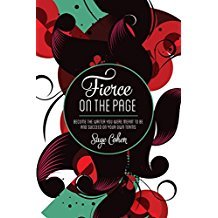 Sage Cohen, in Fierce on the Page, said:
Sage Cohen, in Fierce on the Page, said:
When envy comes up in your writing life, I propose that you don’t subdue it in the name of propriety and good citizenry. I hope you do the opposite: investigate it until you get top that place in you that says, I want, I need, I DESIRE.
Jealousy only becomes bad when it prompts thoughts about others. Secret wishes for another’s downfall or even just, passive-aggressively, that they might not be quite so successful until you’ve caught them up, are negative in the extreme. Worse, they’re counter-productive. Fuming—even suppressed fuming—about frustrations with another’s success just gets in the way of your ability to act productively on your own behalf.
Instead, when jealousy strikes, focus on yourself:
1. Identify Your True Emotional Triggers
Why are you jealous? Because it’s your dream to land that specific agent? Because right now you’re doubting your ability to even write a good sentence, much less the dreamed-of book? Because you think the other writer’s success was undeserved for a specific, quantifiable reason (i.e., “I could write a better book than that!”)?
It’s easy to gripe about other people—whether accurately or not. What’s not so easy is facing down our own motives. Looking our insecurities in the eye can be terrifying. Admitting our work isn’t yet good enough to help us fulfill our dreams is, at best, frustrating. And feeling like you’re doing everything you know how to do—and still not getting what you want—is heartbreaking.
But the only way to address a problem is to first honestly acknowledge what’s really going on.
2. Step Away From the Ego
So many of our jealousies are just plain silly. As already mentioned, art is far more cooperative than competitive. Resentment of another writer’s success is often (always?) counter-intuitive. (If you write an amazing story and I read it, I am going to be that much more likely to write a better story myself thanks to the gifts your story has given me. And then, of course, there’s the fact that if a reader reads and loves your amazing story, they’re going to be that much more pumped to read another amazing story—and maybe they’ll read mine!)
But the ego isn’t always sensible. Certainly, it isn’t easy to overcome. Just realizing and admitting a) the undeniable reality of the ego’s demands and b) it’s often childlike short-sightedness is a huge step toward redirecting its power.
Looking at the bigger picture (of life, art’s role in life, and our role in art) is a helpful re-centering trick. Humility is inevitable when we are honest about how infinitesimal each of us is within that larger picture (and yet, how each of us, supplies an inevitable butterfly effect). It then becomes easier to recognize and embrace the contributions of our fellows, rather than feeling threatened by them.
3. Act on What You’ve Learned About Yourself
Once you’ve dug down deep inside yourself to discover what’s at the root of your writer’s jealousy, you will have gained information you can act on. You’ve faced down your insecurities. Maybe what you’ve found is something as surface level as My characters aren’t as good as my writing buddy’s characters! or something as deep as I will never feel worthwhile unless I can write an acclaimed book!
More than that, you’ve discovered uncluttered truths about what it is you want: to be published, to be a bestseller, to win an award, to impact readers of a certain group, to write for the pure joy of it.
Your jealousy has given you an indication of your progress. It tells you you’re not yet where you want to be. It’s a road sign, saying “120 miles to Graceland.” You’re not there yet. But you are on the right road. Congratulate yourself—and keep driving.
Wordplayers, tell me your opinions! Do you ever struggle with writer’s jealousy? What do you do about it? Tell me in the comments!
http://www.podtrac.com/pts/redirect.mp3/kmweiland.com/podcast/writers-jealousy.mp3
Click the “Play” button to Listen to Audio Version (or subscribe to the Helping Writers Become Authors podcast in iTunes).
The post Writer’s Jealousy—And 3 Thoughts on What to Do About It appeared first on Helping Writers Become Authors.
August 13, 2018
How to Market Your Book–When You Hate Marketing
 Writers these days don’t get to think about just writing. If you want to learn how to sell your books, you must also think about marketing. And yet, most writers hate marketing.
Writers these days don’t get to think about just writing. If you want to learn how to sell your books, you must also think about marketing. And yet, most writers hate marketing.
Popular marketing wisdom, particularly within the last decade, says newbie authors should start building marketing platforms before they’re ever published. Start a blog, start a podcast, start a YouTube channel. Get active on Twitter. Build an email list.
This is something I’m frequently asked about. I get emails from authors saying,
I’m just starting to write my first book. What can I do to market it?
The sense from most of these authors is a little confused, sometimes even a little desperate. “Do I really have to do this?”
Writers know marketing is inevitable if they want to sell any copies and make any money. And yet, I daresay for almost all of us, there is this intuition that marketing isn’t just hard, it’s sometimes downright… icky.
Instead of trying to fully overcome that disconnect, I think it’s important to really look at it, to understand the nuances of the competing demands upon you, and to use them to refine a vision for how to sell your books without selling out.
3 Disconnects Between Writing and Marketing
These days, a writer is expected to be a marketer. This is absolutely true if you’re publishing independently, and only slightly less true if you’re publishing traditionally. It’s a dog eat dog world out there, baby. Millions of books are published every year. If your book is ever going to bob close enough to the surface to be fished out by readers, you must be prepared to equip it with some orange floaties.
Writers, like all artists, have long bemoaned the necessity of selling their work, in the active sense. We love to have our work validated by sales. But only the happy unicorns among us enjoy getting out there in the world with our sandwich boards to convince people our words merit a couple of their hard-earned dollars and a couple more of their precious leisure hours. Indeed, a profitable sub-industry exists within the writing world, designed to help frustrated and hapless writers find the techniques (and sometimes hacks) that will guide their books into Amazon’s Top 100.
It’s just one of the uncomfortable paradoxes of being a modern writer: writing and marketing go together about as well as oil and water—and yet go together they must. There are a couple reasons why this balance is so difficult.
1. Writing Is an Introverted Task; Marketing Is an Extroverted Task
Why’d you become a writer in the first place? Likely, it was because you had something to express and found the comforting solitude of expressing it within the metaphor of story to be the most natural mode. This doesn’t necessarily mean you are an introvert (although, odds are), but it does mean you’ve chosen to apply yourself to an introverted task. You’re good at it, and you’re doing everything you can to get better at it.
Marketing, however, is not introverted. Marketing demands you get out there, shake hands, kiss babies, and generally flaunt whatever you’ve got and sometimes even what you don’t got. This is where the major disconnect comes in for most artists. And with good reason. We’re basically being told that to be successful in our chosen field, we must go through a major personality transplant with every new book launch.
2. Art Is Genuine and Vulnerable; Marketing Is Not
Another disconnect is that, at least on a surface level, art and marketing seem to be polar opposites. Art is an expression of one’s genuine and vulnerable self. It says, “Here I am. Take me as I am or leave me as I am.”
Marketing, even at its most low-key, is about putting on a glitzy outfit and jumping up and down in the crowd to make sure you are the one noticed. Marketing is about making campaign promises that swear readers are going to love this book even before they’ve opened the front cover.
This “promise” is obviously problematic even when what the marketing is intended to sell is a BMW. But when you’re pitching something as undeniably subjective as art? That’s a false promise—and no one knows it better than the honest artist.
3. Art Is a Gift; Marketing Is a Sales Pitch
Those artists who make enough money off their art to allow them to create full-time are blessed. But I daresay few of us really write for the money. (If it was all about money, we’d ditch the writing and become full-time marketers, right?) We write because the writing is a gift to ourselves and, we hope, eventually a gift to others.
Marketing, however, is not about giving gifts. Under the guise of giving someone something they really want (and which, indeed, we hope they do), what we’re really trying to do is get something in return, whether it’s royalties or just the gratification of gaining a reader.
How to Reframe Ideas of How to Sell Your Books
Maybe you’re nodding your head, saying, “Yes! That’s exactly how I feel! Down with marketing!” And yet… the disconnect is still unresolved. It’s still there, for all of us, itching away with its dichotomous but undeniable necessity.
I believe that’s a good thing.
The disconnect’s not going away for any of us, and while that may not be particularly comfortable, I believe it’s an excellent sign. This deep-seated disconnect the artist feels with marketing keeps us honest. It keeps us focused on our true motives, reminds of our priorities, and, I believe, makes us both better writers and better marketers.
That brings me back to our initial question: When and how should you think about how to sell your books?
But I don’t want to answer that question. I could say the usual bit about not getting your wires crossed too soon, about focusing on finishing the book first, on first having something to share with readers so they’ll have a reason to listen when you start talking on social media and your blog.
That’s old news. Honestly, that’s all pretty intuitive and obvious.
I also don’t want to talk about specific marketing techniques. I could say you need a blog you update regularly, you need a social media presence, you need Amazon and Facebook and Google ads, you need great cover art and flashy launch parties.
But that’s old news too. Maybe you need all that and maybe you don’t. Some authors have succeeded with these techniques, some have succeeded without them, some have succeeded in spite of them.
Here’s what I am going to say: If you don’t enjoy marketing, then stop thinking of it as marketing.
 Listen to Sage Cohen’s advice in Fierce on the Page:
Listen to Sage Cohen’s advice in Fierce on the Page:
Instead of thinking of your writing as a product you are selling, think of it as an offering you are making…. What do you hope to contribute?
Because that’s really what you’re doing, right? I mean, really? Maybe you have to think about it for a bit, because, yeah, of course you also want to be famous and make a million dollars. But if I told you straight up that was never gonna happen, you’d keep writing, right? You’d probably even keep trying to get your books out there where others could read them, wouldn’t you?
That is the artist’s soul in you. It’s also, I sincerely believe, your greatest key to finding your audience and marketing your books.
The Slippery Slope of Sell-Sell-Selling
Ironically, the mindset of embracing the art above all else also presents its own disconnect. As much as we may not want to market our work, we absolutely do want to be paid—preferably, as much as possible. We get huffy when we realize readers are willing to pay twice as much for their daily latte as one of our amazing e-books. And buying used books instead of the new ones that give authors their royalties? Anathema!
I’ve chased this rabbit down its hole. I evolved from inveterate-introverted-writer-who-despised-marketing into someone who reluctantly embraced the necessity of the sales pitch, to someone who became pretty good at it, to someone who was beginning to slide down the slippery slope of valuing commercialism over art.
For me, this eventually led to a period of burnout and soul-searching, which in turn led me to axe a couple techniques that were profitable but that didn’t completely align with who I wanted to be as an artist or a person. Actually, I still feel a little twitchy even writing this post. I’ve made mistakes. I’ve definitely had moments where I (unintentionally) treated my readers with disrespect, where I saw them as buyers instead of fellow travelers. I have occasionally (and certainly not for the last time, I’m sure) failed to recognize and act on my own disconnects between commercial opportunities and artistic values.
But along the way, I have learned (and continue to learn) how to maintain the delicate balance of earning a living as an artist.
Selling is just part of our world. It’s a part of being a writer—whether you’re pitching your book to agents, brainstorming scintillating back-cover copy, researching keywords on Amazon, meeting-and-greeting at conferences, chatting it up on social media, or sharing pix of your cat or kids on your blog. It’s all marketing, and it’s all unavoidable.
What is avoidable is the disconnect between marketing your work and feeling like you either have to sell off a piece of your soul to do it or, at the least, assume a falsely extroverted and pushy persona.
Stop Selling, Start Contributing
Instead, view marketing as Cohen suggests. You’re not trying to cram your book down an unwilling reader’s throat. (Who wants that reader anyway?) You’re not jumping up and down in the crowd and shouting, “Lookatme, lookatme!”
What you’re trying to do is contribute something of value to the world. You’re a writer. You’re an artist. You’re one of those lucky people who gets to mainline themselves as their contribution to the world. Your authentic self is the most important thing you bring. So bring it.
If your stories aren’t connecting with readers, if they’re not selling yet, take a step back and figure out why your fiction isn’t filling a need readers have. This doesn’t mean your stories or your marketing platform should be “message” based. Stripped down to simplicity, we know what people need are good stories. This why the art form, and thus the market, exists at all.
So if your marketing efforts aren’t bearing fruit, look first to the product itself. Is it filling the need for good stories? Or does it maybe need a little more work?
Then look at the packaging. Is your book cover, your back cover copy, even your website giving readers reliable clues that this is that good story they need?
Consider your interaction with readers. This is most obvious on the level of personal interaction: your blog, your social media presence. Perhaps your platform is message-based, and people are coming to you for specific advice or information (e.g., technically, my platform and this blog are “message”-based). Or perhaps they’re just coming to you because they connected with either your fiction or you yourself. Connect back. Don’t sell to them. Serve them.
Then look beyond direct personal interactions. The way you present yourself even in ads represents an interaction with your readers. The ads are there to offer what you have to give.
And don’t forget humility. I believe wholeheartedly that each person has something of value to bring to the world. But just because you’ve built it doesn’t mean people will automatically find it worthy. Hold out your gifts, but realize no one is obligated to take them. Sometimes what we have to give isn’t necessarily ready to be given. Or we’re trying to give it to the wrong people. Or we’re giving it in the wrong way.
Actually, isn’t that the whole point of this discussion? For the artist who wishes to minimize the disconnect being creating and selling, what should marketing ultimately be if not a pursuit of, first, learning how to create something worth giving and, then, learning how to give it in the best way?
Wordplayers, tell me your opinions! How do you balance figuring out how to sell your books with figuring out how to live your best artistic life? Tell me in the comments!
http://www.podtrac.com/pts/redirect.mp3/kmweiland.com/podcast/how-to-sell-your-books-without-selling-out.mp3
Click the “Play” button to Listen to Audio Version (or subscribe to the Helping Writers Become Authors podcast in iTunes).
The post How to Market Your Book–When You Hate Marketing appeared first on Helping Writers Become Authors.
August 6, 2018
4 Ways to Choose a Better Theme for Your Book
 Part 20 of The Do’s and Don’ts of Storytelling According to Marvel
Part 20 of The Do’s and Don’ts of Storytelling According to Marvel
Writers often have a complicated relationship with theme. We love it. It loves us back. But reaching a harmonious happily-ever-after with theme sometimes turns into as much of a soap opera as a long-running CW drama.
Just writing a story that has a theme is a huge step in the right direction—one that will put you far ahead of the pack. But then comes the careful dance of executing that theme in a way that brings plot and character together into a whole of cohesion and resonance.
If you believe you’ve reached that point in your writing journey, then you have my profound respect (and, as a reader, my gratitude).
But here’s something I’ve been learning lately: the thematic journey ain’t over.
We talked a few weeks ago about the idea of “unique themes.” Really, what this concept comes down to is an awareness of authentic themes and a willingness to search beyond the obvious choices to find those that best optimize all aspects of the story.
Today, I want to look at how you can choose a better theme for your book by examining some of the missed thematic opportunities of Marvel’s Ant-Man and the Wasp.
Ant-Man and the Wasp on Why (if You Really Have to Choose) You Should Choose Theme Over Plot Every Time
That headline might sound familiar. It’s the same one I used to introduce Black Panther‘s entry in the series. In that article, I talked about how Black Panther managed to survive its great pitfall—wobbly plot structure—thanks to its devotion to a coherent thematic throughline for its main character.
Ant-Man and the Wasp, sadly, is an example of the opposite. What this movie does well (humor and, well, Paul Rudd), it does very well. But the rest of it? Not so much. I spent the entirety of the film alternating between two reactions—amusement at the funny bits and boredom at pretty much everything else.
There are a couple reasons for this.
Once again, the antagonistic forces are scattered and not particularly integral to the main conflict.

The story lacked the same cohesive “feel” as the first Ant-Man movie (which presented itself, refreshingly, as a “heist” movie).

Most telling of all, protagonist Scott Lang was decidedly ancillary to the main conflict and personally impacted the forward momentum of the plot in only a handful of places.

But the biggest reason—the one all three of the above point to—is the lack of thematic depth. That’s disappointing, especially since, for my money, there were plenty of wasted opportunities.
Still, there was definitely stuff to like:
Paul Rudd. He’s pretty just… Paul Rudd here. But his charm carries every scene he’s in.
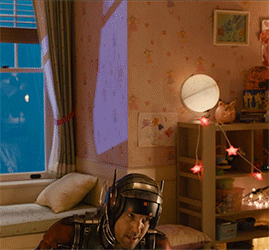
However ancillary his subplot, I totally appreciated the nuances of Bill Foster character’s not turning out to be a back-stabbing baddie, even though his goals and Hank’s stood in opposition to each other.
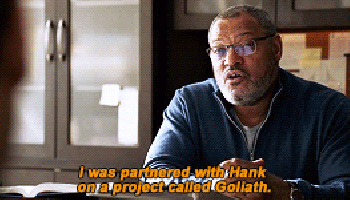
Supporting cast. All the supporting characters were good in their place—everybody from Scott Lang’s ex-con buddies to Michelle Pfeiffer’s cameo (let me just say that if I ever get stuck in the Quantum Realm for thirty years, I hope my eye make-up looks that good) to the always excellent Walton Goggins.

4 Ways to Choose a Better Theme for Your Book
I’m going to argue that the single most common problem I see holding stories back from excellence is a lack of solid thematic execution. Don’t let that happen to you. If you’re going to master just one storytelling technique, strive to master theme. It changes everything.
Don’t leave your theme up to chance. Examine all the elements of your story—especially character arc and plot—to discover how to fit all the pieces together into a big picture of powerful thematic cohesion and resonance. And don’t stop there. Once you think you’ve found a pertinent theme, look harder. Is this the best theme for this story? Or could you choose a better theme that would notch everything up just a little more?
To that end, here are four questions you can ask yourself to determine whether you’ve got a theme, a better theme, or the best theme.
1. What Can Your Protagonist Bring to the Conflict That No One Else Can?
A truth often lost upon modern storytellers (especially within the medium of action movies) is that the heart of your story is not found in your plot. Rather, it’s found in your protagonist.
Consider, by way of example, Christmas. What is Christmas? Is it the decorations, the lights, the tree, the presents, the cookies? Or is Christmas the people, both personally and collectively, whose love, generosity, and faith infuse these traditions with meaning and purpose?
When examining your story for its best theme, start with your protagonist. This begins, of course, with knowing which character is your protagonist (even if your story features multiple main characters, you’ll still want to identify the character who represents the thematic throughline).

And once you’ve found your protagonist—then what? We’ve talked before about how the essence of the theme is both found and proven within the protagonist’s character arc. But you can leverage this even more specifically by asking telling questions about this character.
1. What is it your protagonist brings to this particular conflict that no other character does?
2. Why is this his conflict, his plot—and not anyone else’s in the story?
3. What is your protagonist’s greatest virtue?
4. Greatest flaw?
5. How does this virtue and this flaw directly influence the plot—and what do they say about both the plot and the character himself?
Examining the Protagonist of Ant-Man and the Wasp
As a matter of fact, this film’s title is a clue to its first thematic misstep. Just whose story is this?
Nothing wrong with dual protagonists. But if that’s the route you’re gonna go, both characters’ journeys must come together thematically by the end.
Here, we have Hope Van Dyne set up as the one whose goal (i.e., save her mother from the Quantum Realm) drives the entire plot. And yet, this story is never presented as hers. This is clearly set up as Scott’s sequel. But just as was the case in his first movie, he is totally ancillary to the main conflict. The main plot goal isn’t his. The antagonistic force isn’t directly opposing him. He does very little in this film other than be charming and funny—while Hope stomps around getting stuff done.
But here’s the thing. Just a tiny bit of thematic tweaking could have made this all work. As it stands, Hope and Hank don’t really need Scott to do much of anything to help them reach their plot goals. Scott doesn’t know science like Hank does, and he can’t even whup on the bad guys as convincingly as Hope does. He’s a radio antennae to the Quantum Realm and nothing more.
So what does Scott bring to this story as a protagonist? Or, rather, what could he have brought?
I’m gonna argue this story could have been thematically saved had it only been recognized and emphasized that what Scott brings is heart. He’s a genuinely nice guy who wants to help people. He wants to help Hope and Hank, to the point that in order to help them save their family, he puts everything—including his relationship with his own family—on the line for them. Hank and Hope don’t particularly share this virtue. They have no problem asking Scott to endanger his own family, just as they have few qualms about sacrificing Ghost in order to save Janet.
This is never acknowledged, never used as the thematic leverage point that might have transformed the external conflict into a deeper investigation of life and relationships.

2. How Is the Antagonistic Force a Direct Challenge to the Protagonist’s Relationship to the Theme?
Theme is the glue that binds everything in your storyform. The single most blatant way in which it does this is by binding the external conflict to the internal conflict by binding the antagonist to the protagonist.
One of the most common problems in stories that struggle with thematic cohesion (aka nearly every Marvel movie ever) is the lack of attention to the antagonistic force’s alignment to the theme. Specifically, you want to see the antagonistic force presenting a direct challenge to your protagonist’s thematic orientation.
This can manifest in a couple of ways.
If your protagonist is following a Positive Change Arc, she will start out in a negative relationship to the thematic Truth (i.e., she will resist it or outright reject it in favor of an opposing Lie). In this instance, the antagonistic force will likely represent the negative Lie, which will eventually challenge the protagonist’s view of that Lie and end by catalyzing her move to embrace the Truth.
If your protagonist is following a Flat Arc, he will maintain a positive relationship to the thematic Truth throughout the story (i.e., he will embrace, utilize, and promote the Truth as a way to advance his plot goals). In this instance, the antagonistic force will always oppose the protagonist’s Truth with the Lie. Whether blatantly or not, the external conflict will represent a battle between ideologies.
If your protagonist is following a Negative Change Arc, she may start out in either a positive or negative relationship to the thematic Truth (i.e., she may start out already aligned with either the Truth or the Lie). In this instance, the antagonistic force may represent either the Truth (which, again, will be pitted against the protagonist’s Lie in at least a subtextual battle of ideologies) or the Lie (which will serve to seduce the protagonist to her ultimate demise).
Whatever the case, if the antagonistic force does not comment upon the theme in a way that catalyzes the external conflict, you can be pretty sure the external and internal conflicts are not in alignment. In short: at best, you’re telling two different stories at the same time.
Examining the Antagonistic Force in Ant-Man and the Wasp
Marvel movies remain a high step above most of the remaining blockbuster fare these days for the simple reason that they keep the majority of their stories deliberately focused on their protagonists. But Marvel’s perpetual Achilles’ heel remains its disconnect between those protagonists and their antagonists. With a few exceptions (most notably Cap vs. Tony in Civil War), Marvel’s antagonists (and thus their external conflicts) have very little thematic pertinence to the protagonists’ personal journeys.
This is blatantly on display in Ant-Man and the Wasp, which features four (count ’em, four) antagonistic forces:
Ghost is the flashiest and most poster-worthy of the story’s cadre of antagonists. She consistently creates obstacles to the primary goal of rescuing Janet Van Dyne—but her connection to this main conflict is ancillary. It’s coincidental that the tech she needs to save herself is also the tech needed to save Janet. Even more telling, she has zero explicit connections to Scott, much less specific challenges to his thematic orientation.

Black marketeer Sonny Burch is even more ancillary. He’d have made a lot more sense within the plot had he been working for Ghost or vice versa.

Of the human antagonists in this story, the Feds (who are hunting Hope and Hank while trying to keep Scott under house arrest) are the most pertinent to Scott. They are the only ones who directly threaten him and his personal conflict/stakes. However, they’re merely plot devices who offer no comment whatsoever upon the thematic premise.
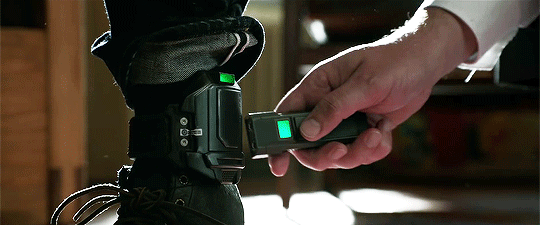
Finally, the true antagonistic force in this story is the Quantum Realm itself, which is preventing the characters from achieving their primary plot goal of rescuing Janet. Although non-human antagonistic forces can comment on thematic premises in powerfully symbolic ways, we don’t see much of that here.

3. How Do the Supporting Characters Reflect Back Aspects of the Protagonist’s Relationship to the Thematic Principle?
As an extension of the antagonistic force’s role of contrasting and challenging the protagonist’s alignment to the thematic Truth, every other supporting character in the story should also comment upon the theme in some way.
Think of your overall theme as a big mirror smashed on the floor. The biggest chunk of glass is your protagonist. The second biggest is your antagonist. And every other shard represents every other character. They all reflect the theme. They all show a different piece of the big picture. Some reflect positively upon the theme; some reflect negatively. They all represent a different relationship to the Truth and the Lie.
If any character or plot device fails to reflect an aspect of the theme, that character or plot device is almost certainly failing, at least in part, to serve the story’s overall cohesion.
What this ultimately means is that every dialogue exchange, every minor character’s relationship to the protagonist, every minor character’s personal goal/ conflict—should comment upon the theme on every page of the story. This will not, of course, be blatant. The best stories present thematic weaves so complex it’s sometimes impossible for readers to immediately identify the thematic weft—but when it’s there, readers respond instinctively to the depth and consistency being presented.
Examining the Supporting Characters in Ant-Man and the Wasp
This movie’s biggest wasted opportunity was in its supporting characters and their relationship to the protagonist. Let’s particularly examine Hope. Had she either impacted Scott thematically or been impacted by him, the story would have instantly gained a ton of thematic resonance.
Yes, she “changes” by forgiving him in the end and deciding to let him be her crime-fighting partner. But those choices seem both inevitable and arbitrary.
If, instead, the plot had set Scott up with a primary thematic Truth that emphasized his generosity and compassion in risking his own well-being to help Hope and Hank, this would, in turn, have allowed Hope the opportunity to arc. She could have moved beyond her willingness to use Scott into a willingness to embrace his Truth by risking herself to help him protect his own family in the end.

4. How Could the Main Conflict Be Presented as a Metaphor for the Theme?
Theme at its best is both simple but deep, complex but subtle.
One of the single best ways to achieve this is to think of the entire story—the protagonist’s character arc and the events of the plot—as a metaphor for the theme.
My all-time favorite example of this is in Mamoru Hosoda’s Wolf Children. This story offers the high concept of a single mother secretly raising her half-werewolf children. It’s so high concept it just screams plot. The story itself never comments outright on its themes of parental sacrifice and struggle in the face of a child’s inevitable growth from complete reliance to clumsy independence.
And yet this is an incredibly thematic story. Everything in this story comments upon the universal struggle of raising, loving, and letting go of your children. It does it without ever feeling thematic. It never forces a message. It doesn’t have to, because everything about it is built to symbolize one cohesive idea.
Sometimes you may get your thematic idea first, from which you can then figure out the best plot to symbolize its inherent ideas. But usually, plot comes first. This is actually much trickier.
Take a look at the events you’ve constructed so far. Step way, way back.
What does this story look like from afar? Does it have a shape? Stripped of all the particulars of plot events and personalities—what is left? The stronger, the simpler, and the more cohesive the shape, the more opportunity you will have to create subtle depth.
Examining Thematic Metaphors in Ant-Man and the Wasp
If there’s any thematic shape at all to Ant-Man and the Wasp, it has to do with family—how far we’re willing to go to protect or rescue them and how much we’re willing to sacrifice.
In its simplest iteration, this movie is about Hope and Hank’s desperate gambit to rescue mother/wife Janet from her long imprisonment in the Quantum Realm. There are echoes of this thematic premise in Scott’s devotion to his daughter and even in rival scientist Bill Foster’s determination to save the life of his daughter-figure Ava/Ghost.
Together, these relationships all create some echo-y resonance within the sound chamber of the overall story. But that’s about it. Because the characters themselves have little to no interaction with a unifying theme, any parallels within the plot end up feeling more coincidental than anything.
Again, it’s a shame, because the pieces needed to create a more interesting and impactful thematic presentation are all there.

***
Theme is the transformative factor in any story. Learn how to harness it on every level of your story, and you will have created something wonderful.
Stay Tuned: In March, we’ll find out what we can learn from Captain Marvel.
Previous Posts in This Series:
Iron Man: Grab Readers With a Multi-Faceted Characteristic Moment
The Incredible Hulk: How (Not) to Write Satisfying Action Scenes
Iron Man II: Use Minor Characters to Flesh Out Your Protagonist
Thor: How to Transform Your Story With a Moment of Truth
Captain America: The First Avenger: How to Write Subtext in Dialogue
The Avengers: 4 Places to Find Your Best Story Conflict
Iron Man III: Don’t Make This Mistake With Your Story Structure
Thor: The Dark World: How to Get the Most Out of Your Sequel Scenes
Captain America: The Winter Soldier: Is This the Single Best Way to Write Powerful Themes?
Guardians of the Galaxy: The #1 Key to Relatable Characters: Backstory
Avengers: Age of Ultron: The Right Way and the Wrong Way to Foreshadow a Story
Ant-Man: How to Choose the Right Antagonist for Your Story
Captain America: Civil War: How to Be a Gutsy Writer: Stay True to Your Characters
Doctor Strange: 3 Ways to Test Your Story’s Emotional Stakes
Guardians of the Galaxy, Vol. 2: How to Ace the First Act in Your Sequel
Spider-Man: Homecoming: 4 Ways to Write a Thought-Provoking Mentor Character
Thor: Ragnarok: How to Write Funny
Black Panther: How the Truth Your Character Believes Defines Your Theme
Avengers: Infinity War: 4 Ways to Write a Better Antagonist
Wordplayers, tell me your opinions! Can you think of any ways to choose a better theme for your book? Tell me in the comments!
http://www.podtrac.com/pts/redirect.mp3/kmweiland.com/podcast/4-ways-to-choose-a-better-theme-for-your-book.mp3
Click the “Play” button to Listen to Audio Version (or subscribe to the Helping Writers Become Authors podcast in iTunes).
The post 4 Ways to Choose a Better Theme for Your Book appeared first on Helping Writers Become Authors.
July 30, 2018
2 Simple Pacing Techniques That Grab Reader Emotions
 Whether or not we care to admit it, much of what we do as writers is manipulation. With careful characterization, we manipulate readers into believing the characters lived before the book began and continue living long afterward. We create settings they long to escape to and plots that keep them wrapped up until long past midnight. When we’ve done our jobs right, we’ve manipulated our readers into turning one more page… one more page…
Whether or not we care to admit it, much of what we do as writers is manipulation. With careful characterization, we manipulate readers into believing the characters lived before the book began and continue living long afterward. We create settings they long to escape to and plots that keep them wrapped up until long past midnight. When we’ve done our jobs right, we’ve manipulated our readers into turning one more page… one more page…
As writers, we also manipulate readers’ emotions—assuming we know what we’re doing. It’s a tricky business. We can’t simply tell readers the character is crying and expect them to cry too. We can’t have a character laugh and expect the same from the reader. rarely elicits the response we’re looking for. This means we must learn some tricks of the trade.
“Show, don’t tell!” tops the list of writer tricks, followed by “Kill all adverbs!” and “Choose strong verbs!” But did you realize sentence and paragraph structure can also help elicit the emotions you’re looking for?
Here are a couple of subtle techniques—yes, manipulation techniques—your readers won’t even notice.
Pacing Technique #1: Short Sentence, Short Paragraph
Short sentences are quick to read. Short paragraphs leave a lot of white space. What happens when you throw them both together? You create a pace. Readers speed along at a quick clip, which mimics the emotion you’re trying to elicit.
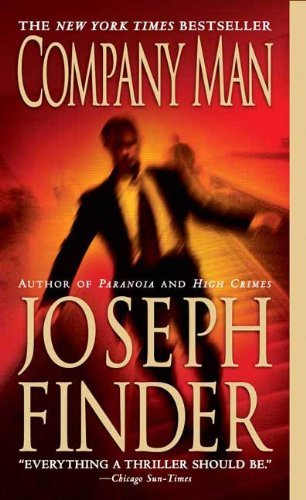 Take this clip from award-winning suspense writer Joseph Finder’s Company Man. Moments before this scene, the bad guy was snooping around the hero’s home. He’d already proven himself a threat, so the hero shot him. This scene happens afterward:
Take this clip from award-winning suspense writer Joseph Finder’s Company Man. Moments before this scene, the bad guy was snooping around the hero’s home. He’d already proven himself a threat, so the hero shot him. This scene happens afterward:
The man’s chest was not moving; he was not breathing. Nick leaned over him, the pistol now dangling in his left hand by his side. He placed his right forefinger on the man’s throat and felt no pulse. This was no surprise; the staring eyes had already announced that the maniac lay dead.
He’s dead, Nick thought. I’ve killed him.
He was suffused with terror. I killed this guy. Another voice in his head began to plead, defensive and frightened as a little boy.
I had to. I had no choice. I had no… choice.
I had to stop him.
Maybe he’s just unconscious, Nick thought desperately. He felt the man’s throat again, couldn’t find the pulse. He grabbed one of the man’s rough, dry hands, pressed against the inside of his wrist, felt nothing.
He let go of the hand. It dropped to the ground.
He poked again at the man’s chest with his toes, but he knew the truth.
The man was dead.
The crazy man, this stalker, this man who would’ve dismembered my children the way he butchered my dog, lay dead on the freshly seeded lawn, surrounded by tiny sprouts of grass that poked out sparsely from the moist black earth.
Oh, Jesus God, Nick thought. I’ve just killed a man.
He stood up but felt his knees give way. He sank to the ground, felt tears running down his cheeks. Tears of relief? Of terror? Not, certainly not, of despair or sadness.
Oh, please, Jesus, he thought. What do I do now?
What do I do now?
We’ve moved beyond the adrenaline of actually killing the man. Now we’re watching the hero’s response as he degenerates from intentionally protecting his household to realizing what he’s done. He’d never killed a man before, and within moments of realizing the bad guy was dead, he flashed through a myriad of emotions.
Let’s overlook some of the adverbs, emotion-naming, and the (deliberate) lack of italics for internal monologue, and look at the sentence structures.
In the first paragraph, Nick is stunned, unsure of his situation. The author portrayed this with longer sentences than what you’ll see as we go along. Notice he even used semicolons to avoid short sentences.
There are a couple of paragraphs like that, but as reality digs its fangs into him, you’ll see his sentences getting shorter. The paragraphs get shorter. Lots of white space on the page. Nick’s emotions are degenerating into panic and almost a despair—and we the readers are taking that plunge along with him.
Pacing Technique #2: Short Sentences, Long Paragraphs
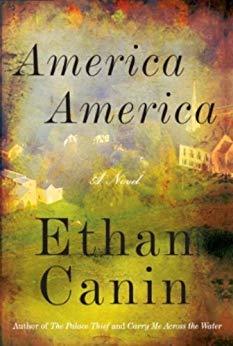 Putting short sentences in longer paragraphs creates a different effect. In the next excerpt, from Ethan Canin’s America, America, the hero’s mother died while he was away at college. He went to the funeral, then returned to college. Now, after a period of time, he’s back, visiting with his father:
Putting short sentences in longer paragraphs creates a different effect. In the next excerpt, from Ethan Canin’s America, America, the hero’s mother died while he was away at college. He went to the funeral, then returned to college. Now, after a period of time, he’s back, visiting with his father:
“Made a salad. Have you ever made a salad?”
“A couple times.”
“You wash the lettuce. Then you have to dry it. If you don’t dry it, the dressing comes out watery. I hate drying it. But I do it. On a paper towel. That’s the way she showed me how. She showed me a lot of this stuff, you know.”
“And then she would dry the paper towel on the windowsill,” I said, “so she could use it the next day.”
“That’s right. So I do it now too. Come look.”
He went back into the kitchen.
When I came up behind him, he said, “There it is,” and pointed to the sill.
There it was. Damp. Folded over the top stile of the sash to catch the sun.
“I’ve used the same one every day now since—since it happened,” he said. “She’d like that. Dries good as new.” He pulled the roll from the shelf. “They’re Scott, see? She always bought Scott. So now I do too.” Her apron was still hanging on the stove handle, and after he set the towels back he reached to straighten it. “Wish I could tell her.”
This starts off with the short sentences—terse communication between father and son. His father tends to use short sentences more often, as evidenced in the first long paragraph. The son’s line illustrates that he hasn’t felt the level of loss his father has. Then notice later: “There it was. Damp.” Short, as if the son has started to realize the loss himself.
Notice the father’s last paragraph. Along with the short sentences, he adjusts his wife’s apron still hanging on the stove handle. The emptiness he feels is almost tangible.
Whenever I present this excerpt in a speech, at least one person ends up swiping tears from her eyes. Usually more. Not once was the reader told “he cried.” Word choice and sentence structure illustrate his loss greater than any “telling” an author could do. And showing him adjust an apron he’d never stored away is the clincher.
Watch What You’re Reading
These are only a couple of the techniques using sentence and paragraph structures. I’ve discovered many more while reading. The best way to discover these techniques for yourself is to read, often and widely. Read books that teach you how to write, then read writers who have already excelled in their fields to see those techniques put into practice. If, as you read, you find yourself feeling some emotion, realize the authors manipulated that emotion from you. Then go back and see how they did it!
***
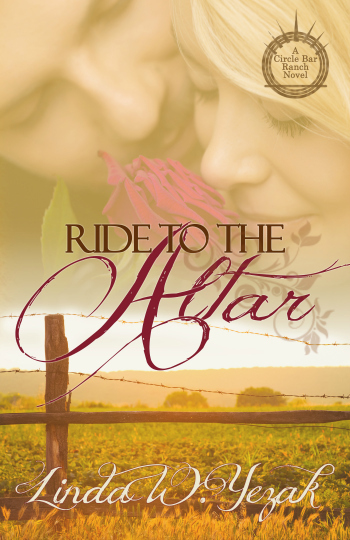 Note From K.M. Weiland: This is a guest post by my critique partner Linda Yezak. To celebrate the release of her latest contemporary western romance Ride to the Altar, she is offering a prize package to one lucky entrant in her blog-tour giveaway! As pictured below, the prize includes a signed print version of her Circle Bar Ranch series, a 16-ounce Christian cowboy mug, a horseshoe picture frame, a Ph. 4:13 stretch bracelet, a cute set of magnetic page markers, and a Texas Rubiks cube just for fun.
Note From K.M. Weiland: This is a guest post by my critique partner Linda Yezak. To celebrate the release of her latest contemporary western romance Ride to the Altar, she is offering a prize package to one lucky entrant in her blog-tour giveaway! As pictured below, the prize includes a signed print version of her Circle Bar Ranch series, a 16-ounce Christian cowboy mug, a horseshoe picture frame, a Ph. 4:13 stretch bracelet, a cute set of magnetic page markers, and a Texas Rubiks cube just for fun.

All you have to do to enter is to leave a comment! The more posts you comment on during hertour, the better the chance you have of winning the drawing! If you’d like to play along, the next blog stop is with mystery/YA author, Mary Hamilton. The winner will be announced Monday, August 6, on Linda’s blog, 777 Peppermint Place.
The post 2 Simple Pacing Techniques That Grab Reader Emotions appeared first on Helping Writers Become Authors.




